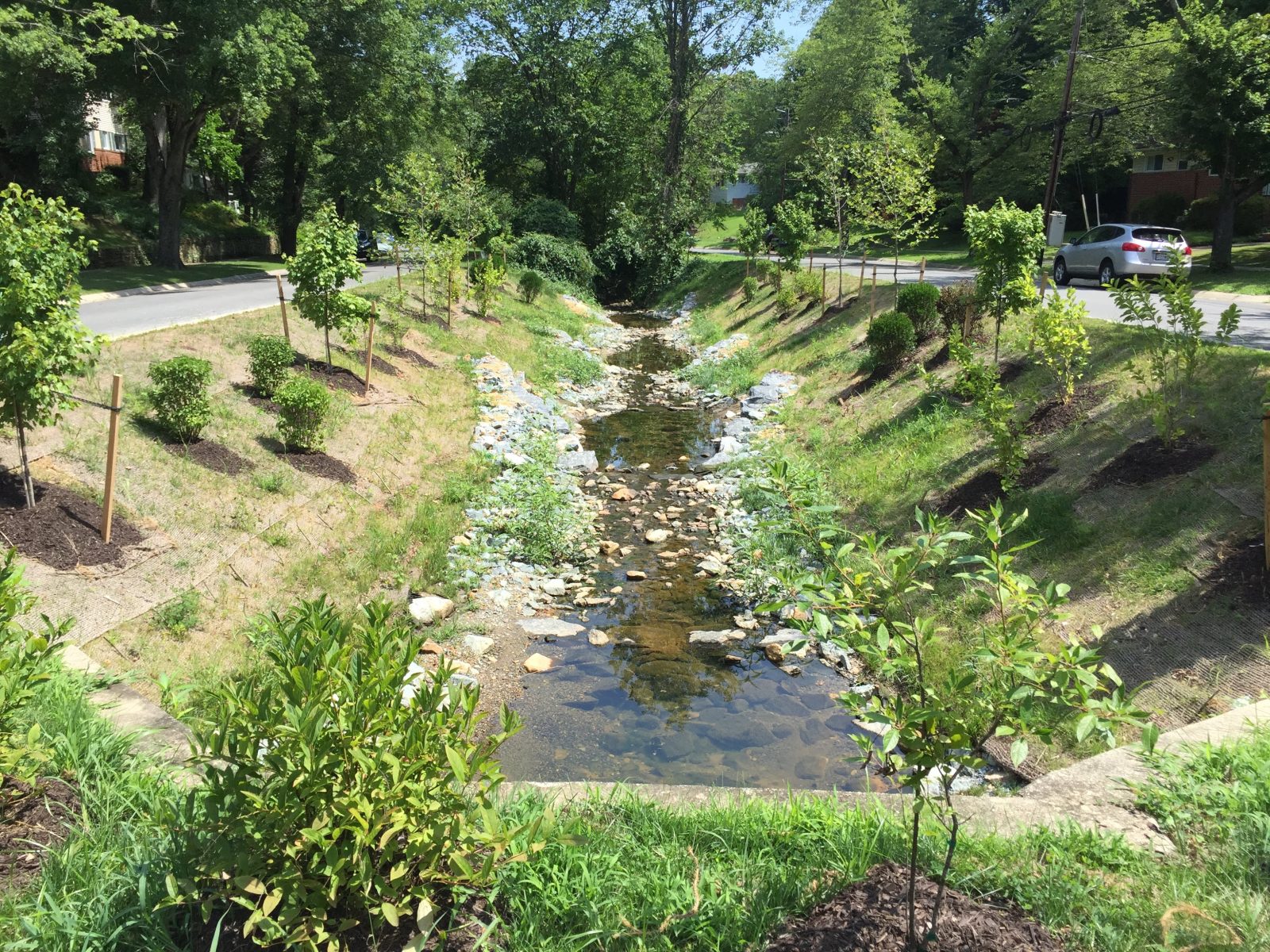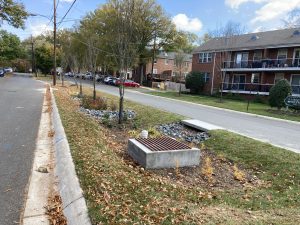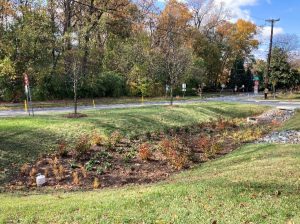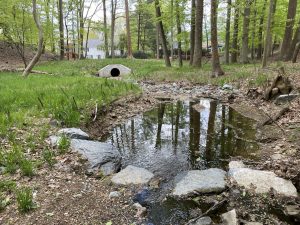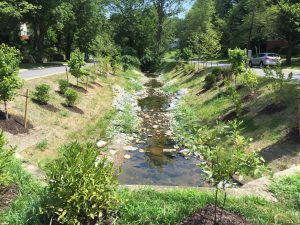How GPI Applies Nature-Based Solutions
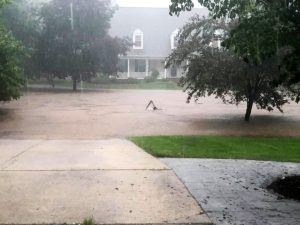
Flooding has become a major issue in communities across the United States and globally as storm event intensity and frequency increase.
Communities around the globe are experiencing higher temperatures, more frequent and powerful storms, extreme weather events that include droughts and floods, rising sea levels, eroding shorelines, deteriorating water quality, declines in biodiversity, and shrinking habitats. Developing demonstrable solutions to these problems has become a recognized priority. The concept of “Nature-Based Solutions” advances the view that it is possible to merge the needs of human societies with natural ecosystems in a symbiotic and sustainable manner with benefits for both.
NBS focuses on incorporating the benefits of natural systems with “sustainable planning, design, environmental management, and engineering practices,” according to the Federal Emergency Management Agency (FEMA). First developed in 2008 by the World Bank and the International Union for Conservation of Nature (IUCN), the concept has been embraced by the United Nations through its research and advocacy to tackle the effects of climate change.
Engineering with Nature
How does this apply to our work? At GPI, we take corporate responsibility and sustainability seriously. GPI’s sustainability statement affirms “our responsibility to provide economic efficiencies, minimize negative impacts on the environment, and provide positive impact to community and social well-being.” We collaborate with our clients on projects that promote “positive, impactful sustainability practices.”
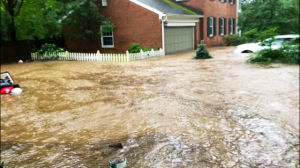
River Falls neighborhood during the July 2019 flooding event. |
This translates to:
|
Project Highlights
GPI’s environmental team engages in NBS practices in collaboration with other GPI departments, including Structures and Highways, and through independent pursuits. The following are two examples when the GPI environmental team delivered a range of nature-based solutions as part of our service offerings for a client in Maryland:
River Falls Drainage Assessment, Montgomery County Department of Transportation, Potomac, MD
The neighborhood of River Falls was developed from the late 1960s to the early 1970s. At that time, it was acceptable to develop a residential community, associated roadway, and drainage infrastructure within the existing stream and floodplain system. However, with precipitation intensity increasing and storm events becoming more frequent over the years, the neighborhood’s storm drain system does not meet the current 10-year storm event design standards. Many residents have experienced multiple flooding occurrences, including a flood in July 2019 that caused resident concern and property damage.
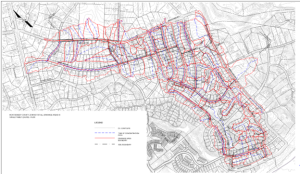
The GPI team analyzed several drainage solution options that included storm drain system upgrades, implementation of “green” infrastructure practices that would promote infiltration, reduce runoff, and provide water quality benefits, and associated construction cost estimates for each treatment option. These drainage alternatives considered not only the current flood hazards but also how these hazards may be further exacerbated in the future by the impacts of climate change. Currently, GPI is moving into the next phase of the project by developing neighborhood concept design plans to minimize the impact of flooding.
Drainage Assistance Request (DAR) Program Management and Storm Drain Outfall and Stream Restoration Program, Montgomery County Department of Transportation (DOT), Montgomery County, MD
The Drainage Assistance Request (DAR) program and Storm Drain Outfall and Stream Restoration task orders are two separate Montgomery County DOT programs that provide drainage improvement solutions and stream erosion control where flooding and erosion issues occur on public county property and on adjacent private properties. Drainage projects range from retrofitting existing storm drainage systems to developing new drainage systems necessary to improve drainage issues in older subdivisions. Storm drain outfall and stream restoration projects range from minor outfall retrofits to full-scale stream and valley restoration of varying channel sizes. Drainage improvements include installing “green” infrastructure, such as bioswales and bioretention stormwater management facilities to improve water quality as well as curb and gutter to control runoff. Storm drain outfalls and stream restoration/stabilization interventions employ bioengineering techniques, such as vegetation establishment and natural structural materials (when feasible), to stabilize eroding stream channels.
Montgomery County DOT (MCDOT) provides a list of priority projects that the GPI environmental team investigates, conceptualizes, and designs. As part of the DAR program, MCDOT also addresses drainage issues initiated by county residents and public agencies. For these projects, GPI conducts outreach with the local concerned community to understand and address the drainage issues and designs and permits the drainage improvement. Each drainage improvement project requires outreach to the local community, applies practical, low-cost drainage solutions, and incorporates native landscaping and “greening” an area when appropriate. GPI then coordinates with the county’s on-call contractor to ensure these drainage improvements and channel stabilization projects are constructed and functioning as designed. Over a seven-year period, GPI has investigated over 1,040 drainage DAR cases, with 29 projects completed and 61 projects currently in design, permitting, or pending construction. Similarly, over a six-year period, GPI has investigated 35 outfall and stream restoration cases, with eight projects completed and 21 projects currently in design, permitting, or pending construction.
The Spruell Drive Project was initiated through a drainage assistance request submitted by a concerned member of the neighborhood association, Rock Creek Woods. The homes were designed in the 1960s by a recognized architect, Charles M. Goodman, and feature midcentury-style construction. The neighborhood is listed on the National Register of Historic Places, with a notable landscape aesthetic, including streets lined with mature cherry trees featuring prominently in the neighborhood’s charm and appeal. The entrance to the neighborhood, seen in the bottom left “before” photo, plagued the community with constant stormwater runoff and ponding issues due to a lack of existing drainage infrastructure and impervious cover. GPI worked with the community to design and implement a “green” infrastructure solution, consisting of a pervious cover for drainage and infiltration and filling the space with native landscaping to filter stormwater runoff (see bottom right, “after” photo). In developing the design, GPI had to account for water, sewer, and overhead utility lines running through the space, as well as runoff from the adjacent three-lane Connecticut Avenue. Drainage improvements resolved the ponding issues. Secondary benefits included beautification of the entrance with native woodland edge plantings to provide interest all year as well as accompanying minimization of the dumping and littering that had been consistently bothering residents.
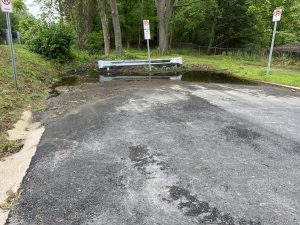
Spruell Drive Project (before) |
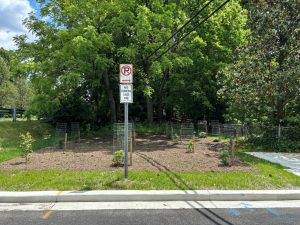
Spruell Drive Project (after) |
Where Does GPI’s Nature-Based Solutions Path Lead?
The GPI environmental team will continue to provide its expertise in resolving stormwater management issues to an expanded clientele at the local, state, and federal levels, explore and implement innovative “green” infrastructure and stream stabilization options, and advance into burgeoning important markets, including coastal, extreme storm event, and climate change resiliency. The GPI team is currently expanding its expertise in coastal resiliency. This involves training team members with relevant certifications and classes and gaining exposure to coastal shoreline designs through partnerships and construction inspection roles. Currently, the team’s focus is on developing a Master Drainage Plan for the 250-square-mile Croatan National Forest for the U.S. Forest Service (USFS) in New Bern, NC. This project is a collaboration of the GPI Delmarva branch, Florida branch, and GPI Geospatial. In this role, GPI will be inventorying, performing conditional assessments, hydrologic and hydraulic (H&H) analysis, and proposed sizing on 345 culverts. We are also performing surveys, H&H analysis, and developing design plans for six bridges. All culverts and bridges are being assessed and designed to pass the 100-year and 500-year flood events. We are studying the effects of Hurricane Florence, which recorded over 30 inches of rain on September 14, 2018.
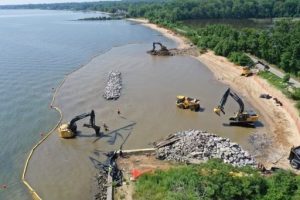
The GPI team conducted a construction management inspection for a coastal shoreline and beach replanting design |
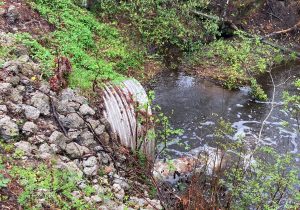
More recently, team members conducted outfall field assessments throughout the Croatan National Forest |
In these capacities, GPI recognizes the value of incorporating NBS where applicable to reduce impacts on the surrounding natural ecosystems, enhance biodiversity, create ecological uplift, benefit local communities, and increase resilience to severe storm events and the changing climate.
